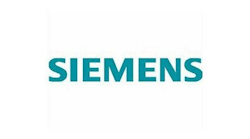Siemens and Kapsch Equip First German Line with ETCS Level 2 Train Control System
Consortium partners Siemens and Kapsch are equipping the 230 kilometers of newly constructed line running from Ebensfeld via Erfurt to Halle and Leipzig with Level 2 of the European Train Control System (ETCS). The new line is part of the German Unity Transport Project No. 8 (VDE8). The project, with a track length of around 500 kilometers, includes the high-speed route from Nuremberg to Berlin and is part of the railway axis of the trans-European transport network that extends all the way from Scandinavia to Italy. It is the first time that this cuttingedge control and safety technology has been used in Germany. The necessary signals are transmitted digitally into the driver's cab of the train exclusively via the Global System for Mobile Communication - Railways (GSM-R). In what is a world first, conventional fixed exterior signals will not be used anywhere on the new line. The total value of the order placed by the customer, Deutsche Bahn AG, is in the region of 93 million euros and it is planned that the project will be commissioned in two stages during 2015 and 2017.
Whereas Eurobalises are used as the primary transmission medium in ETCS Level 1, virtually all information in Level 2 is transmitted by means of GSM-R from the radio block center (RBC) to the vehicle via the Euroradio protocol. This technology allows information to be exchanged continuously, even when the train is at standstill. Consequently, when the controller is shifted from stop to drive, the train can accelerate immediately without having to continue braking until the next trackside transmission point is reached. This enables speeds of up to 300 km/h to be achieved and increases line capacity.
"Thanks to this technology, we are laying the foundation for integrated cross-border rail traffic, as well as consolidating our leading position in the field of modern train control and safety technology", affirmed Jochen Eickholt, CEO of Siemens' Rail Automation Business Unit. In the long term, ETCS will replace the 14 different train protection systems currently used across Europe with one standardized technology. In addition, a proportion of the light signals along the trackside will be replaced with cab signals. This will not only significantly reduce infrastructure costs, but it will also make interoperable European rail traffic possible.
Siemens' Rail Automation Business Unit is to equip the railway line between Ebensfeld and Leipzig with 13 Simis D type electronic interlockings and with Trainguard 200, the automatic train protection system for ETCS Level 2. Vehicles equipped with this technology are able to locate their positions within this line section automatically and to transmit this data cyclically to the radio block center (RBC). The RBC constantly receives the latest process image from the interlockings and gives the train permission to proceed via radio transmission. The GSM-R system supplied by Kapsch CarrierCom serves this express purpose. Deutsche Bahn has been using this Kapsch system since 2002 for speech communication in its railway operations and as a transmission medium for its ETCS Level 2-based train control. "The VDE 8 project is very important to us and underlines the trust that Deutsche Bahn places in our GSM-R technology. The installation of an ETCS Level 2 system in Germany is a globally significant reference for Kapsch", says Thomas Schoepf, COO Kapsch CarrierCom.



